Searching for the legendary and mysterious glacier bears of northwestern Canada

SOARING MOUNTAINS festooned with glaciers. Hillsides blanketed with wildflowers. A lake filled with blue-white icebergs. River edges tattooed with the tracks of bear, moose, wolf and wolverine. Of all the very good reasons to take a trip down the Tatshenshini and Alsek rivers, which run from Yukon through British Columbia and Alaska to the Pacific Coast, surely the most compelling is the chance to see one of the rarest animals on Earth. It’s a bear so uncommon, and about which so little scientific knowledge exists, that researchers are only now unravelling the mysteries surrounding it.
Glacier bears, also known as blue bears, are a rare colour phase of black bear. The bear’s striking pelage ranges in colour from silvery blue-grey to charcoal-grey to black with silvery tips. Even the colour of an individual glacier bear can vary, with lighter tones on the bear’s back and shoulders and dark hair on the legs and belly.
They live in a remote patch of wilderness that includes the extreme northwestern tip of British Columbia, southwestern Yukon and the southeastern coast of Alaska from Juneau to Yakutat. Within this exceptionally rugged terrain of icefields, fiords and the towering St. Elias Mountains, the Tatshenshini and Alsek rivers cut important corridors through the coastal mountain ranges, allowing plant and animal migration from coast to interior.
Some bear experts believe that glacier bears, most commonly observed in Alaska, use the Tatshenshini-Alsek river valley to range inland from the coast. Canadian River Expeditions runs rafting trips through much of the region, 255 kilometres down the Tatshenshini River from Dalton Post, Yukon, through British Columbia’s Tatshenshini-Alsek Provincial Park to Dry Bay, Alaska. But, admits the company’s owner Neil Hartling, “I’ve not seen a glacier bear in my 25 years on the river.” Nor have four other experienced area guides.
Esta historia es de la edición January/February 2019 de Canadian Geographic.
Comience su prueba gratuita de Magzter GOLD de 7 días para acceder a miles de historias premium seleccionadas y a más de 9,000 revistas y periódicos.
Ya eres suscriptor ? Conectar
Esta historia es de la edición January/February 2019 de Canadian Geographic.
Comience su prueba gratuita de Magzter GOLD de 7 días para acceder a miles de historias premium seleccionadas y a más de 9,000 revistas y periódicos.
Ya eres suscriptor? Conectar
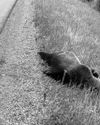
ANIMAL XING
THIS PAST SUMMER AN AMBITIOUS WILDLIFE UNDER/OVERPASS SYSTEM BROKE GROUND IN B.C. ON A DEADLY STRETCH OF HIGHWAY JUST WEST OF THE ALBERTA BORDER. HERE’S HOW IT HAPPENED.
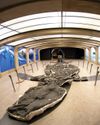
Unearthing a giant
Almost 30 years ago, paleontologist Elizabeth “Betsy” Nicholls made a discovery of colossal proportions
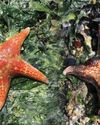
WE DID THIS
AS THE IMPACTS OF GLOBAL WARMING BECOME INCREASINGLY EVIDENT, THE CONNECTIONS TO BIODIVERSITY LOSS ARE HARD TO IGNORE. CAN THIS FALL’S TWO KEY INTERNATIONAL CONFERENCES POINT US TO A NATURE-POSITIVE FUTURE?
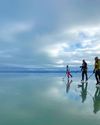
The COOLEST COUNTRY
“The coolest country” celebrates the wonders of winter with an all-Canadian theme. The 20-page travel planner includes a bucket list from travel writer Robin Esrock, steamy spa ideas, ice fishing destinations, festival fun, northern itineraries and more!
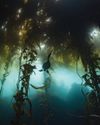
KEEPER of the SEA
FROM BEING LABELLED DEVIL’S APRON BY FRUSTRATED FISHERMEN TO BEING LAUDED AS A SUSTAINABLE FOOD SOLUTION: HOW KELP’S POTENTIAL IS BEING REALIZED, JUST AS SCIENTISTS LEARN IT’S DECLINING
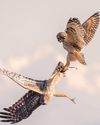
WILD THINGS
WILD CANADIAN GEOGRAPHIC PRESENTS THE WINNERS OF ITS ANNUAL CANADIAN WILDLIFE PHOTOGRAPHY OF THE YEAR COMPETITION

AN EMPTY LANDSCAPE
AFTER MORE THAN A MILLION YEARS ON EARTH, CARIBOU ARE UNDER THREAT OF GLOBAL EXTINCTION. THE PRECIPITOUS DECLINE OF THE ONCE MIGHTY HERDS IS A TRAGEDY THAT IS HARD TO WATCH — AND EVEN HARDER TO REVERSE.
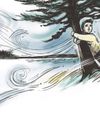
NORTHERN EXPOSURE
BON INTO A CARIBOU-HUNTING CREE FAMILY IN NORTHERN MANITOBA, ACCLAIMED PLAYWRIGHT AND NOVELIST. TOMSON HIGHWAYS PAYS TRIBUTE TO THE MAGICAL WORLD OF HIS CHILDHOOD IN PERMANENT ASTONISHMENT
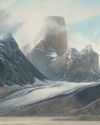
INTO THE ARCTIC
CANADIAN PAINTER AND FILMMAKER CORY TRÉPANIER EXPLORES THE SUBLIME AND RAPIDLY CHANGING CANADIAN ARCTIC

Under the ice
Until the last decade, we knew little about what lay beneath the Arctic ice. Now scientists and explorers are shedding light on this vanishing world.